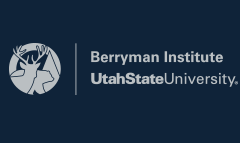Creative Commons License

This work is licensed under a Creative Commons Attribution 4.0 License.
Abstract
Grazing management avoids overgrazing by allocating forage for livestock on the basis of animal unit months and managing wild and free-roaming horses (Equus caballus) and burros (E. asinus) to achieve and maintain an appropriate management level (AML) for each herd. Riparian green forage and water attracts cattle (Bos taurus) and equids when upland forage is brown. Key species that focus management for resilience to weather variation, fire, and floods are preferred forage plants for cattle and horses. They include riparian stabilizers such as densely rooted sedges and deep-rooted perennial grasses in sagebrush (Artemisia spp.) and many other rangeland types. As riparian areas became recognized as important habitats for wildlife and central focus areas for hydrologic processes, growing-season-long continuous grazing or too much grazing when only riparian forage is still green and growing became recognized as often debilitating to riparian functions. Continuous growing-season-long grazing also often impairs upland resilience. Without management of animal location and grazing strategies to provide periods of recovery from grazing, stocking rates must be more conservative for resilience of riparian and upland ecosystems. Human movement of livestock to control impact on plants from high intensity or repeated grazing, or to enable recovery from grazing, meets objectives across many rangelands. This movement can be facilitated by virtual fencing and/or stockmanship and facilitates soil organic carbon storage. Humans moving wild and free-roaming horses and burros (WFRHBs) is not currently viewed as an option under the Wild and Free-Roaming Horses and Burros Act. The 1971 Act defines AML as “thriving natural ecological balance and multiple use relationship in that area.” This is now clarified by land health standards for livestock and WFRHBs. Appropriate management levels were set before riparian and other land health standards were considered essential. Many herd management areas may now require downward adjustment of AML.
Recommended Citation
Swanson, Sherman R.
(2024)
"Grazing Management for Livestock, Free-Roaming Horses and Burros, and Resilience,"
Human–Wildlife Interactions: Vol. 18:
Iss.
1, Article 13.
DOI: https://doi.org/10.26077/fd7c-a841
Available at:
https://digitalcommons.usu.edu/hwi/vol18/iss1/13



